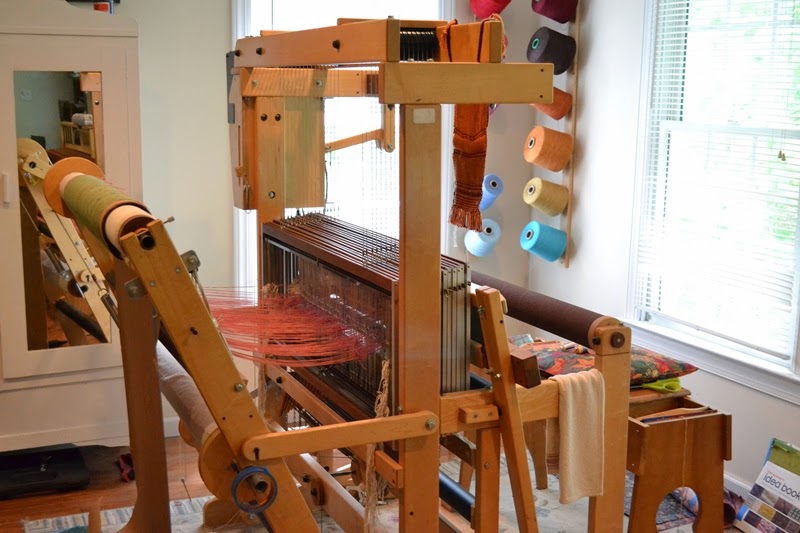I hate to sound like I'm stating the obvious, however what a cold nasty winter we are having!
Since it's been too cold to play with Nuno Felting in the garage, I decided to study up on my You tube Library and learn how to make felted Flowers.
All you need to get started is:
- a small piece of tulle
- a small piece of bubble wrap
- lukewarm soapy water
- plastic grocery bag (ha finally a decent use)
- wool roving
Pull out small pieces of roving and try to get the sizes as uniform as you can….get at least 6 layers. Then, get your fingers wet and twist one of the ends.
 |
| Petals laid out |
Arrange the petals on the bubble wrap.
Then with contrasting roving, add different colors to create more detail.
Then add some leaves. Same twisted ends as the flower petals.
 |
| Adding details |
 |
| Add leaves |
Once you get everything laid out the way you hope it's going to turn out. (Remember that natural fibers have a life of their own!)
Cover the wool with your piece of tulle
Using your plastic grocery bag dipped in the soapy water, gently wet down the wool. It's not necessary to drench it. You don't want puddles.
After the wool is wet, g-e-n-t-l-e-y pull off the tulle and if any wool comes up, c-a-r-e-f-u-l-l-y smooth the wool back where you think it belongs.
Roll the bubble wrap over the roving, trying to take care that the bubble wrap is over the wool before you start to roll. If you roll and the wool over-laps on it's self it will distort the petal.
This is how your flower should look when it's all rolled up,
You then roll it 30 times. You don't' have to smoosh down on it very hard, just some gentle rolls back and forth as you count to 30.
After the 30 rolls, c-a-r-e-f-u-l-l-y unroll you flower. you can start to see the design. Make any necessary adjustments on the petals or leaves.
Then turn the bubble wrap the the next side and roll up and roll again.
you want to do this on each side to balance the rolling and pressure.
After all the rolling (120 times!) your flower is ready for the second half. Also, you can freely go ahead and make any adjustments to the layout of your flower.
Now, on to the stamen!
Pull off a length of green roving (or whatever color you want to use)
Cut about 7-8 cotton embroidry thread about 3 inches long
Lay the embroidery thread over the roving as shown above
carefully knot the roving so that the threads and roving look like above.
dampen the stamen with your soapy water, just enough that it holds together.
With a small pair of sharp scissors, cut a small hole in the center of your flower.
the hole doesn't have to be very big. Too big and you'll have some extra work on your hands.
Gently pull the end of your stamen through the hole, on the right side of the flower. Work the stamen through until you can feel the knot at the base of the hole.
Fold your flower like above
Start rolling the knotted stamen into the flower. Keep the pressure light at first but gradually add more pressure.
If you have to, roll the flower base and stamen in your bubble wrap and massage the fibers
When it starts to felt together, take more of your green roving and wrap it around the base and stamen
Roll on as much of the green roving and also roll the rest of your stem.
By the time you think your fingers are going to fall of, your flower should look like this. See the green has encompassed the flower base and look rather natural.
At this point, to make sure the felting process is done, I put a Tablespoon of White Vinegar into a bowl and pour almost boiling water into it and toss in my flower. The vinegar will neutralize the soap and the steaming hot water will "shrink" the fibers into each eachother.
After 5 minutes, you can remove your flower and squeeze out any water. A rinse with cold water will get rid of any vinegar smell.
Fold your flower into a "bud" state (not tight) and let it dry.
and Viola!
You'll have a felted flower to impress your friends or to enhance your wardrobe.

















































